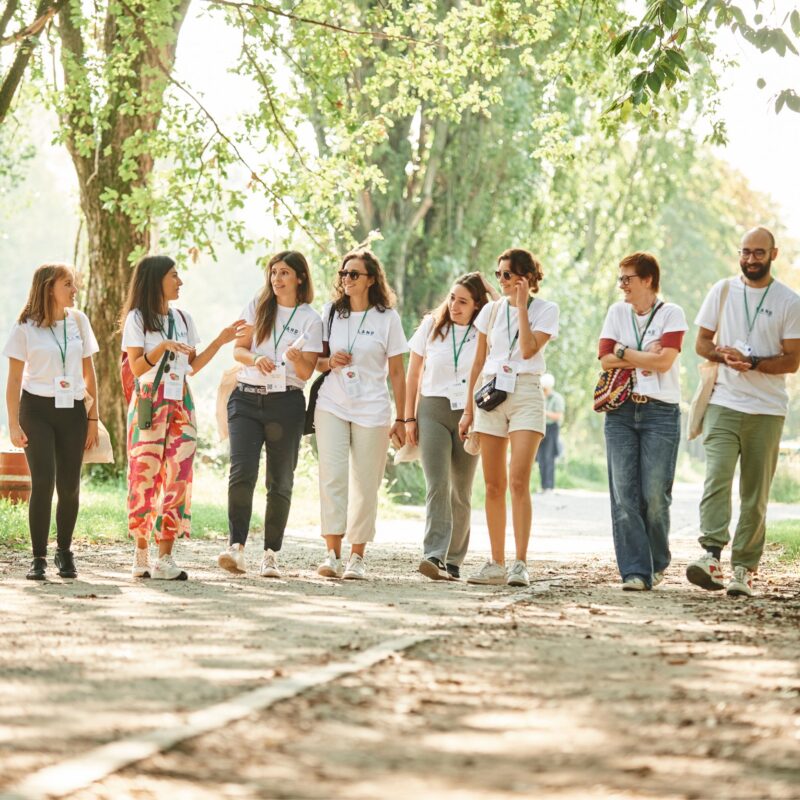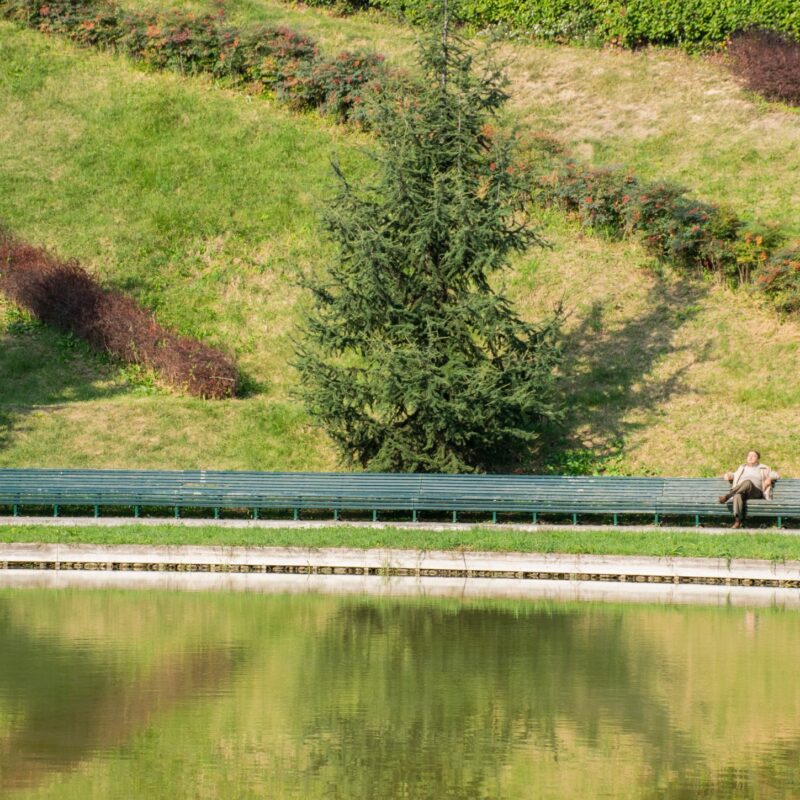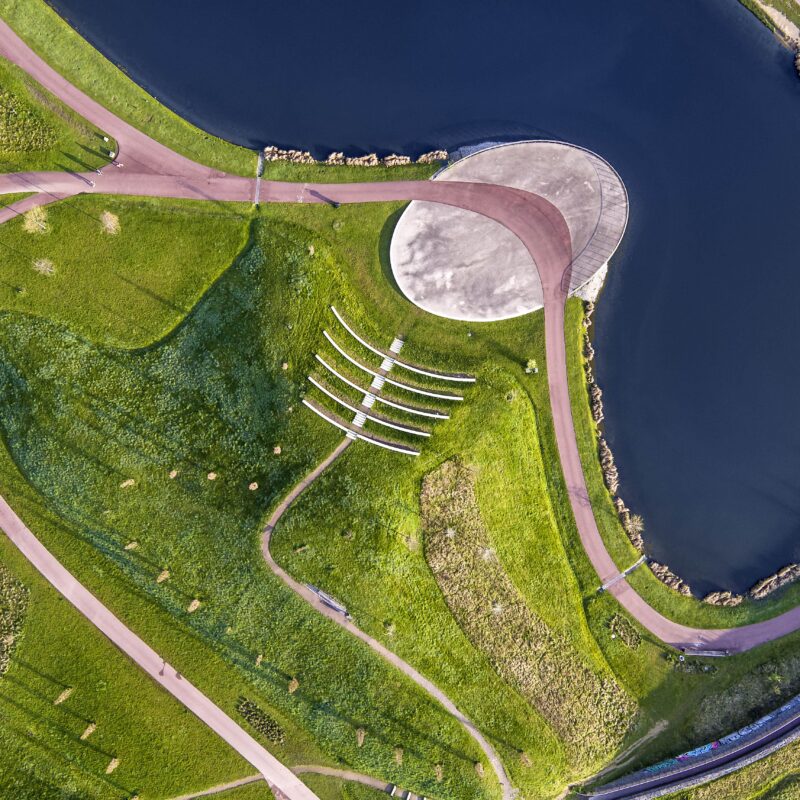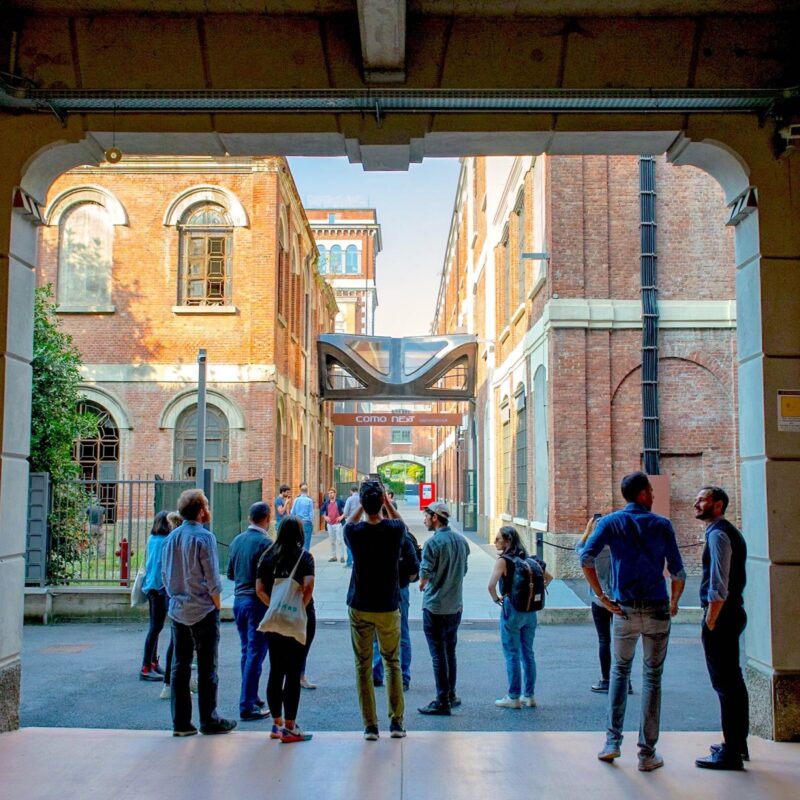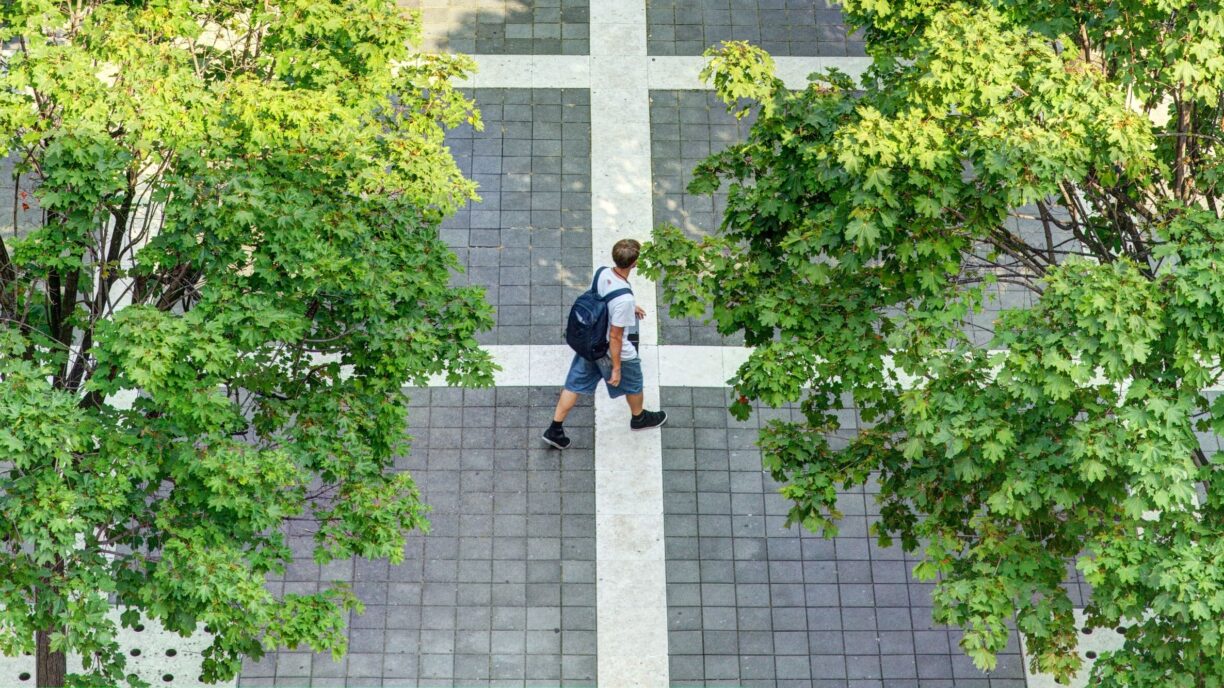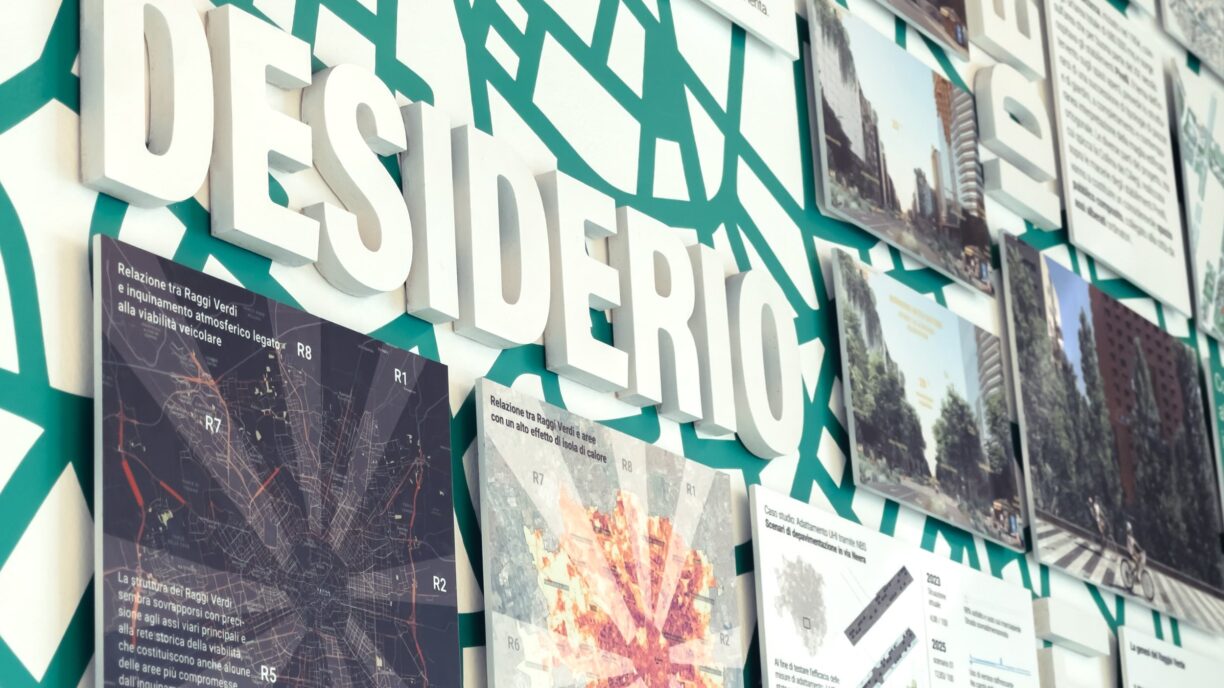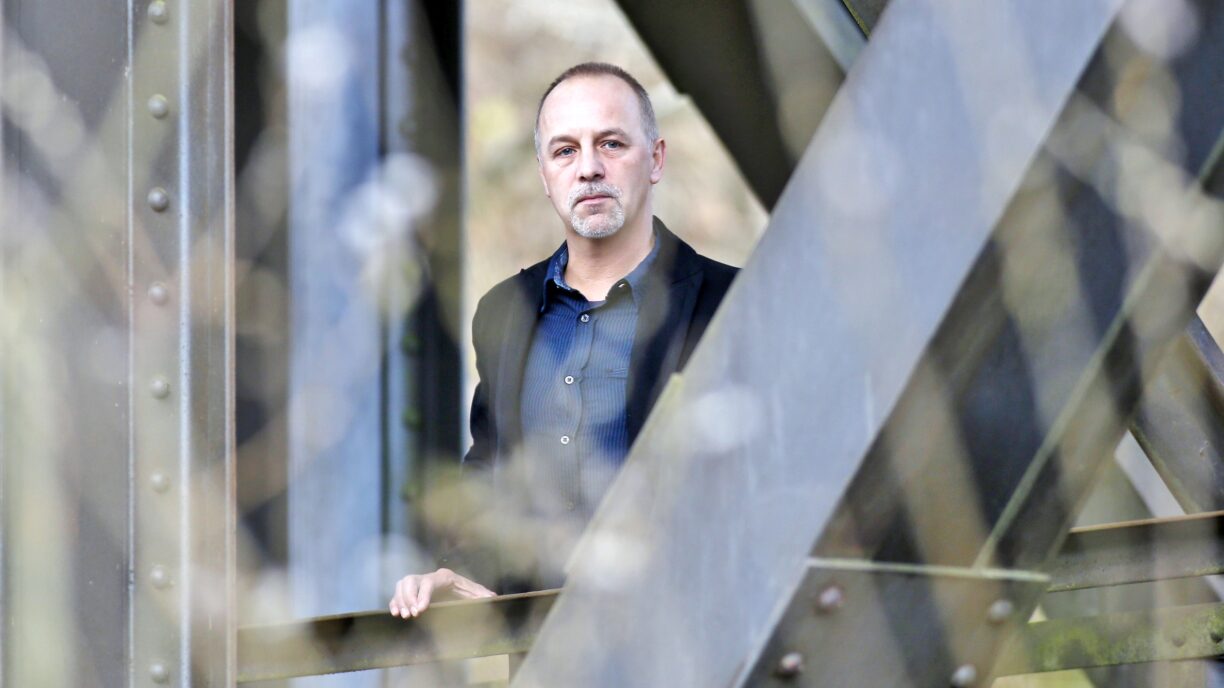
Passion for Nature
Vibram, a corporate leader in high performance rubber soles, wants to transform its Albizzate headquarters into a productive landscape.
The story begins with Vitale Bramani (1900-1970), a mountaineer and alpine guide from Milan who left his mark not only on Italian mountaineering, but also on international entrepreneurship. In 1935, during an ascent to Punta Rasica in Val Bregaglia (Sondrio), he lost six companions when a sudden change in weather and inadequate equipment made it impossible for them to get back to the shelter, resulting in their death from frostbite and exposure. Following this tragic event, Vitale Bramani sought solutions to increase safety in the mountains: his ingenious idea was to replace heavy iron studs in boots with robust rubber lugs. Thus the first Carrarmato sole was created in 1937.
In 1947, the first production plant was opened in Gallarate, followed by the one in Albizzate (province of Varese) ten years later, which is still today company headquarters. For over 80 years, the yellow octagon that identifies Vibram all over the world has been synonymous with quality, performance, safety, and innovation in the footwear industry. Vibram produces over 40 million soles a year for outdoor activities, recreation, work, fashion, orthopedics and repairs. It dedicates more than a million kilometers to testing, is present in 120 countries, and has production and research sites and offices in the USA, China, Japan, Brazil, and Italy.
Now the Albizzate headquarters will be expanded with new buildings. LAND was hired to prepare a master plan to integrate production and administration buildings into the natural environment. With an eye to sustainable development, the landscape will become the star of the entire structure, benefiting employees and the people who live in the surrounding area.
Integrating with Landscape
A conversation with Paolo Manuzzi, Global General Manager of Vibram, on the role of nature.
The subject of productive landscapes, unifying the nature aspect with the productive aspect, is a major gamble for Italy and Europe. Vibram is a brand with local roots but great visibility and international breadth, and thus is the perfect entity to talk about its relationship with nature.
Paolo Manuzzi (PM): “Vibram was established as a result of strong ties to nature; the founder, Vitale Bramani, loved the mountains and was an avid climber during the 1930s. A mountaineer without today’s technical instruments, because his materials and equipment were certainly not cutting edge. A search for the best performing, safest equipment for moving around in nature resulted in the idea of a new type of rubber sole, which made history in mountain shoes.”
What’s your commitment to sustainability today?
PM: “For us, nature has been part of our DNA all the way back to our founder. If there were no meadows and mountains, Vibram would have no reason to exist. We’re very attentive to the environment, which we consider to be a key factor. Even the decision to locate north of Milan was no coincidence: it was near the Alps, we could work near our beloved mountains.
We’re trying to pass on this passion for nature. As far back as the 1990s, we decided to produce compounds that could reduce waste or be reused, to diminish the environmental impact of production. Over the years, thanks to our research and development department, we’ve created another innovative petrolfree solution made of over 90% natural ingredients, where the unique and original colors of this compound are 100% derived from natural pigments, from plants and organic agricultural byproducts.
The entire process was achieved without the use of solvents or chemical products, a factor that underscores Vibram’s constant commitment to responsible and more sustainable high-performing products.
“Reconnecting people with nature” is our mission. The exact same thing is part of your DNA, your thoughts, your actions, and this reinforces the idea of this union. So what drove you to call us? Why a landscape designer?
PM: “One of our goals is harmony and integration with the landscape, not to create ecomonsters. And secondly because we want a green landscape, not normal architecture that proposes an aesthetically beautiful building. We’d like something that could also serve the community, employees. Emersion in nature, in beauty, is important to improve the environment and stimulate all of us, and our collaborators.”
Is this something you’re doing for yourselves, or is it also for the local community?
PM: “For ourselves, to expand, but certainly also for the community. The project idea is to have a public area that the community can use: an environment that can connect people, can make them feel good; this helps promote the brand and develop the company.”
The experience you’re creating, to further integrate the plant with nature and with its landscape, is it something you want to export to other plants in the world? Or maybe this has already happened to some extent?
PM: “It’s already happened to some extent. It’s a philosophy, like the commitment to make a good shoe sole. Nature is that tree, it has to stay where it is, we need to have green, we need a place where people can enjoy the surroundings, the landscape. The approach has been identical in our plants from China to America.”
Are you able to get your neighbors involved, other companies, to popularize this approach?
PM: “We’re trying with other companies too, but it’s hard. Right now we’re in discussions with a neighboring company to create a pathway in the surrounding woods. The pathway would impact a Vibram area at the back, an area of theirs, and would run through several communities with the goal of improving, enhancing and preserving these areas. We’re having a hard time because this involves institutions as well, with whom we have to have conversations. But the idea is to offer a path in the woods for our employees and for the entire community.”
Questions by Martina Erba and Matteo Pedaso, LAND. The conversation took place in May 2023 at Vibram’s head office in Albizzate.
A Master Key in Green and Blue
Vibram headquarters in Albizzate: a new component of the productive landscape.
The project for Vibram’s headquarters in Albizzate emerged from a desire to make sustainability visible and measurable through an approach that considers the landscape a driver of development consonant with European New Bauhaus principles and the objectives of the United Nations’ 2030 Agenda. At the same time, the project is intended to create a showcase that clearly expresses Vibram’s personality, using a company image consonant with its mountaineering and outdoor spirit.
Thus, the goal of the project is to open up the area, to create a showcase that’s accessible to visitors and the community, consonant with company principles. For this reason, the landscape project aims to become a key element of the new industrial complex that can harmonize and unify infrastructural, cultural, functional, and natural aspects.
The proposed master plan includes green infrastructure strategies that can connect the system of open spaces to the new industrial structure, thus creating an integrated architecture and landscape design. Nature becomes an element that can define and characterize the various areas, creating on one hand a recognizable green master key that can determine access points and screen production areas, and on the other introducing natural elements and biodiversity to the center of the Park with a synergistic relationship to the existing waterway, in order to create a true green-blue infrastructure. The addition of a Vibram experiential pathway, winding through the Park along different levels, is intended to help visitors discover the company units that enliven these open spaces and to itself become a landmark and iconic element of the Albizzate headquarters.
Thus, Vibram’s head office becomes a new component of the productive landscape: a polarity that can work with and for the local community while creating new ways for public and private areas to interact with each other, encouraging social cohesion between the company and the local community.
Text: Martina Erba, LAND

Measuring Natural Capital
In order to make the effectiveness of a landscape design concrete and verifiable, it is increasingly necessary to measure its performance in terms of both quality (improved livability and usability of spaces, accessibility, type of use, etc.) and above all quantity, by measuring the performance of natural capital in terms of the supply of ecosystem services. That is, how much the green systems included in the design (trees, shrubs, fields, wetlands, etc.) improve the pre-construction situation from the environmental standpoint.
The principal indicators that could be measured in the project for the New Vibram HeadquartersthroughNature Capital Accounting primarily regard three factors, which are increasingly important to guarantee the safety and livability of open spaces:
- Water Management: soil permeability indices, surface runoff avoided (m³/year);
- Climate change mitigation: sequestration and storage of CO2 (kg/year), tree coverage (m²);
- Air quality: removal of SO2 (g/year); removal of O3 (g/year); removal of NO2 (g/year); removal of PM 2.5 (g/year); production of oxygen (kg/year).
Application of Nature Capital Accounting by LAND permits an assessment of the ecosystem benefits resulting from the project scenario, with a “before/after” comparison and dynamic measurement at 0.5 years, 15 years, and 30 years.
Text: Matteo Pedaso, LAND
Read other Articles from this Edition
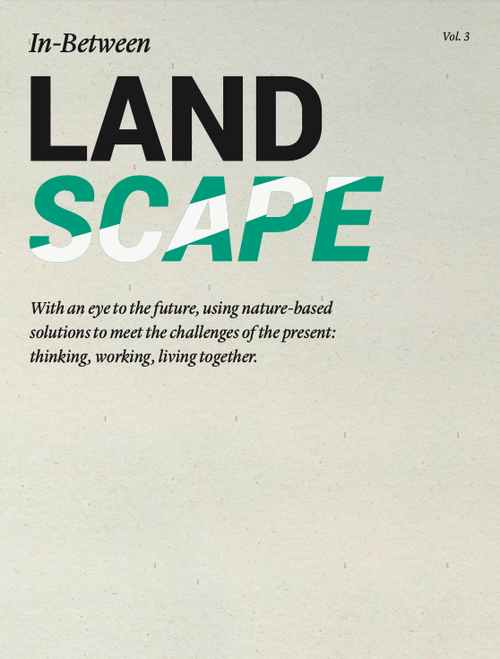
Would you like to receive this Edition of our LAND Magazine?
All mandatory fields are marked with a *
